Here's Everything You Want To Cook For Chinese New Year
June, Delish's senior food producer and resident budget eats expert, set out to cook a whole week's worth of Chinese New Year-themed meals for herself using ingredients from her mom's pantry. Watch to see how she fared—and catch the rest of her series, Budget Eats, on YouTube!
My mom died in October 2021. After receiving news of her unexpected passing, I took a couple of months off from work to handle her affairs. Grief, unlike cleaning house and collecting documents, will be ongoing, maybe for life. In trying to ease myself back into my own routines and segue a return to work, I thought it might be cathartic for me to do a sort of tribute to mom by incorporating the ingredients she'd left behind into an episode of Budget Eats.
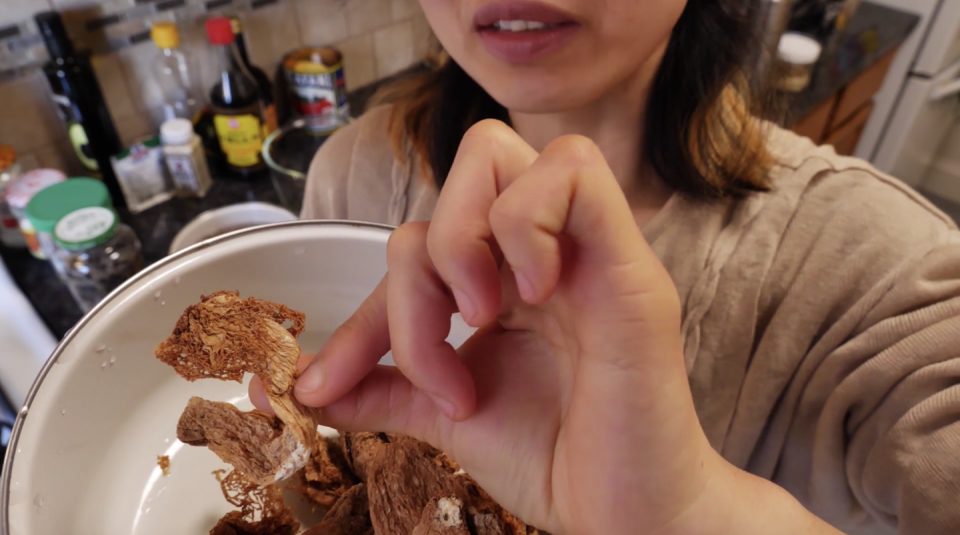
Having missed making both Thanksgiving and Christmas content due to my time off, Julia and I thought it would be fun to make this round Chinese New Year-themed. It turned out to be a rather perfect choice, because mom's pantry held many Chinese ingredients, staples and specialties alike: wood ear, silver ear, goji berries, dried mushrooms, millet, rice (2 types!), century eggs, lotus seed, jujubes, "hair vegetable," shrimp chips. Her spice and sauce collection, while not trumping the one in my kitchen in size, held treasures: pre-packaged 5-spice braising sachets, rock sugar, fresh homemade chili paste, ground cumin packets smuggled from China in 2012 (!!), soy paste, and mysterious brown sauce with small cubes of meat.
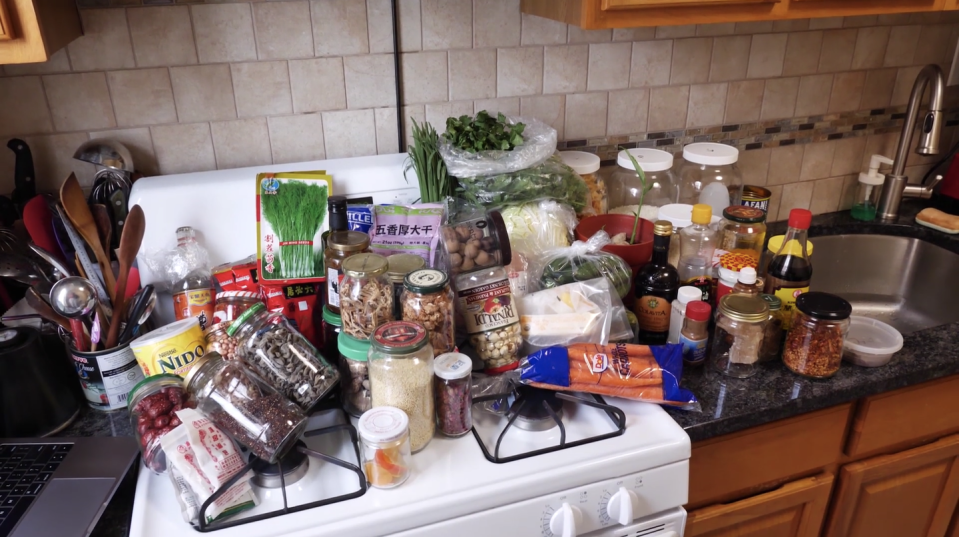
Was it a fun week? Yes. Was it a rough week? Also yes. Did I cry touching the same bowls and pots and utensils mom used, using her grains and seeds, mimicking her food creations? Yes. These are the physical things that remain and tie me to my mother, my memories of time spent with her, reminders of her love for me as shown through the food she cooked for me. It was excruciating to exhaust her ingredients every day, as if every empty jar were another sign of saying goodbye to her forever.
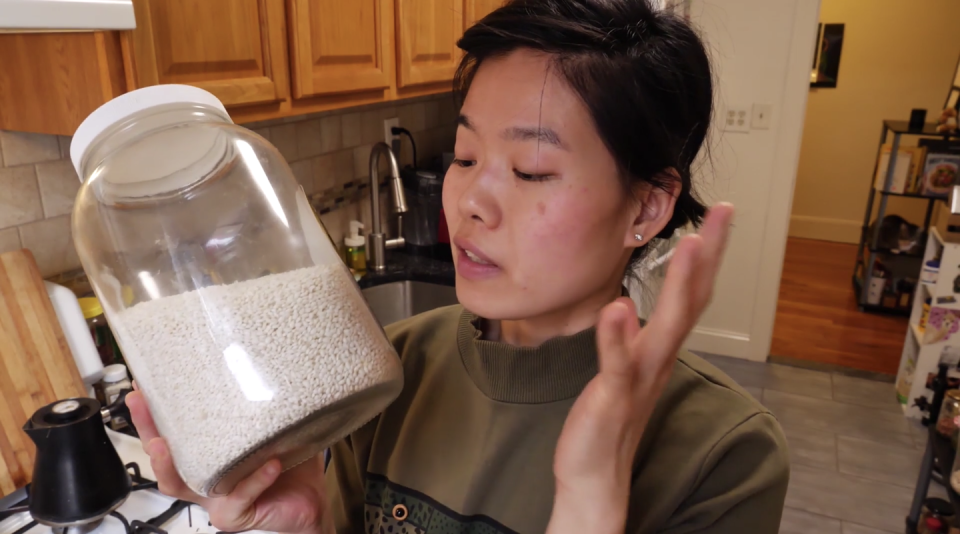
It pained me to throw away failed experiments—which are guaranteed in an episode of Budget Eats—made with her ingredients. But this too was an exercise in processing grief: an extension of my attempts to let go of the mistakes I made in my relationship with her while she was alive, and forgiving myself. Mom would want me to look on the bright side. As she said to me many times, this all is part of experiencing life.
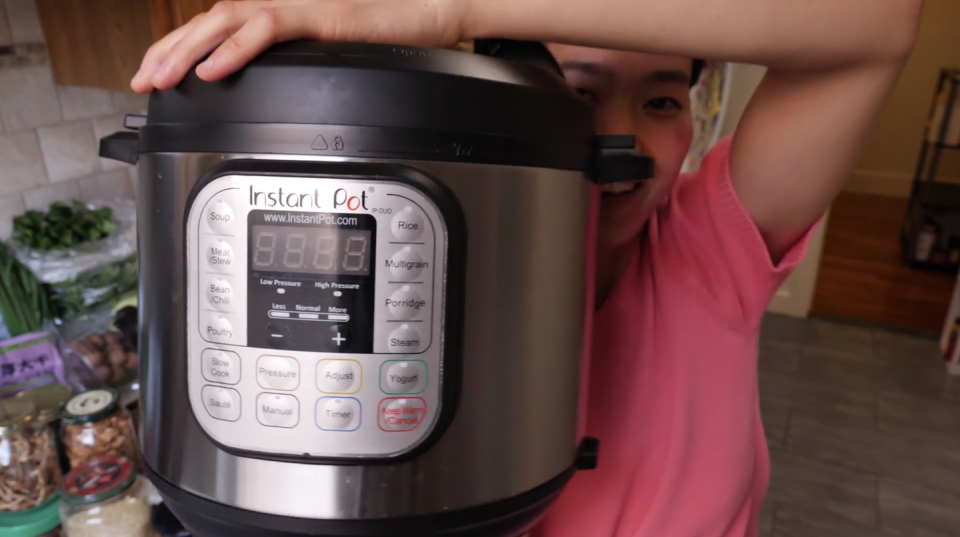
Equipped with her Instant Pot (which I suspect she never actually used), I made many comforting congee variations, a silky, salty braised pork using pork shoulder from her freezer, and a Beijing dessert specialty that I grew up with called 驢打滾 (lǘ dǎ gǔn), translated as "rolling donkey." I of course made savory from-scratch dumplings, a non-negotiable item for Chinese New Year, with various fillings, as well as sweet tang yuan suspended in black sesame soup. I also attempted—and failed, kind of?—to make one of mom's favorite treats, 开口笑 (kāikǒuxiào), a fried sesame cookie that splits open into a "smile."
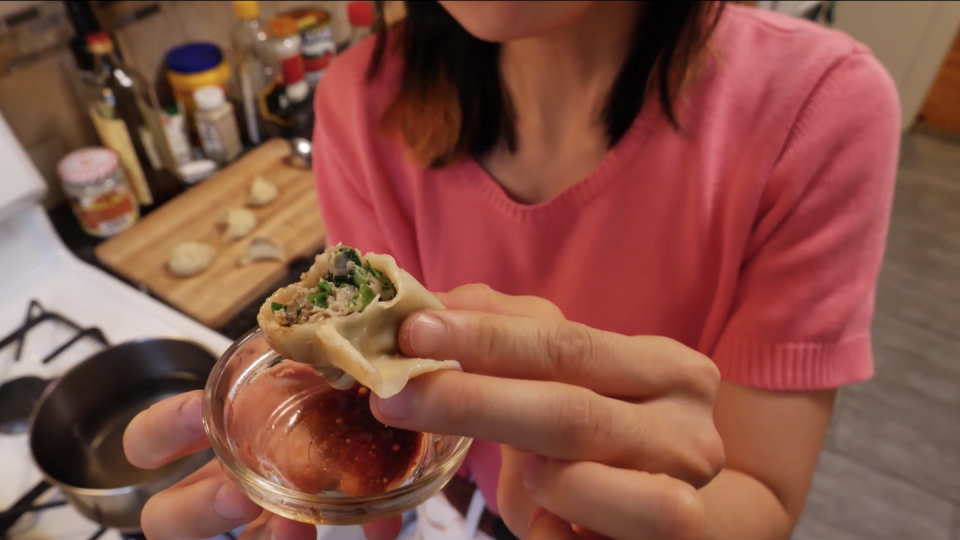
To prevent scurvy, big batches of easygoing smashed cucumber salads were had throughout the week. Because fish is considered good luck in Chinese new year celebrations, I used a very scary, very bony type of fish mom had in her freezer to make a sweet & sour dish. I even tried making a rendition of Buddha's delight, a vegetarian dish that some families serve in the few days of the new year; it would've been perfectly fine without the addition of cursed gingko nuts, which possess a lingering bitterness and a rather flatulent aroma.
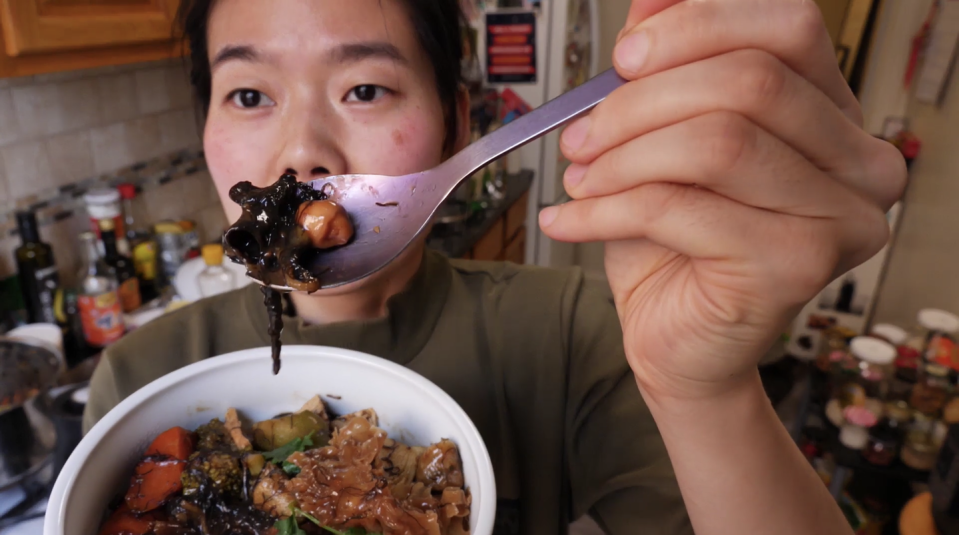
And on the final day of our adventure, we sat down to a hot pot spread as a family, because a holiday just isn't complete without a steaming centerpiece of flavorful broth, individual bowls of personalized sauces, and always too many ingredients ready for the blanching. We popped a bottle of Veuve, poured one out for mom and Aaron's grandfather, and celebrated the food, the traditions, and the people who made us who are, who will forever be with us, within us.
Instant Pot Braised Pork
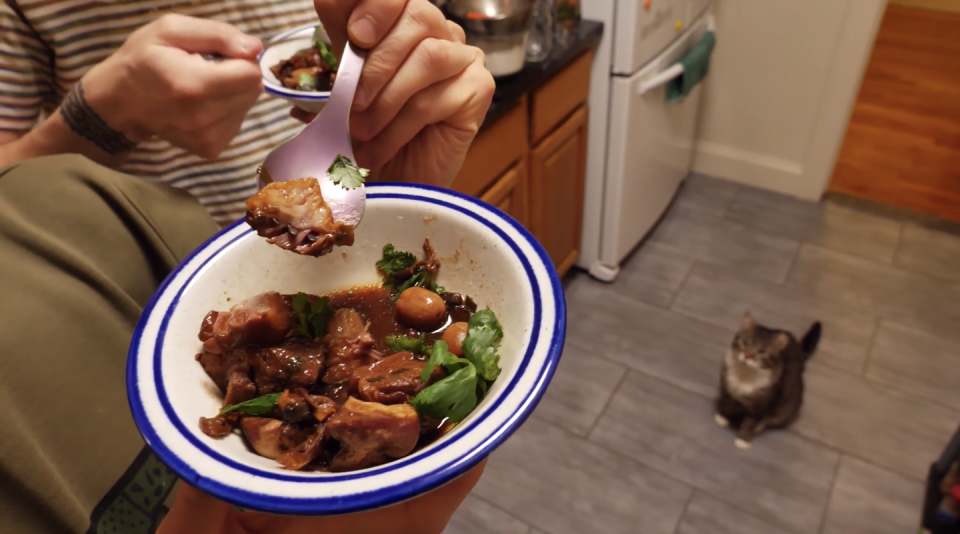
Using mom's Instant Pot, I knew I had the chance to make the most velvety braised pork—and I was right. Aaron and I melted at the first taste of tenderness. When cooked well, the texture of skin-on pork can be described only as "buttery."
Because I had prepped the pork shoulder a couple of days beforehand, the meat had been marinating in the fridge with a thin rub of cooking wine, soy sauce, sugar, and sesame oil. Paired with chive-oil tinged onion, garlic, and ginger and flavored by soy paste, anise, white pepper, and sugar, this pot of pressure-cooked deliciousness yielded so much pleasure in a bite. Soaked in the umami-laden broth, the creamy lotus seeds, the fragrant mushroom, and even the delicate cabbage leaves turned into centerpieces of delight.
Five-Spice Boiled Peanuts
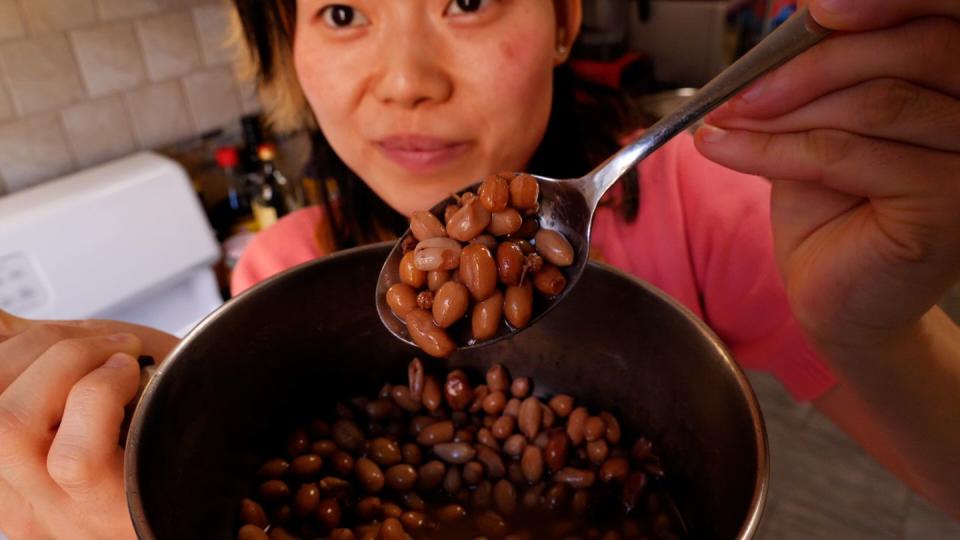
Mom left behind mysterious five-spice packets that I think were meant for flavoring braised meats. Recalling a favorite childhood eat that my uncle used to make, I placed peanuts, water, one mysterious spice packet, salt, Szechuan peppercorns, white pepper, and MSG into a medium pot, brought it all up to a boil for 20 minutes, then turned off the heat and let it all cool off to room temperature together to marinate together a bit more.
The result is like biting into an al dente bean, flavored with the subtle but undeniably alluring pull of all those warm, umami-laden spices—a little sweet and crisp like a fresh pea, half-imbued with salty goodness. If you're wondering about exact measurements, I did it the OG Chinese "family recipe" way—let your fingers and internal compass guide the way.
Rainbow Tang Yuan In Black Sesame Soup
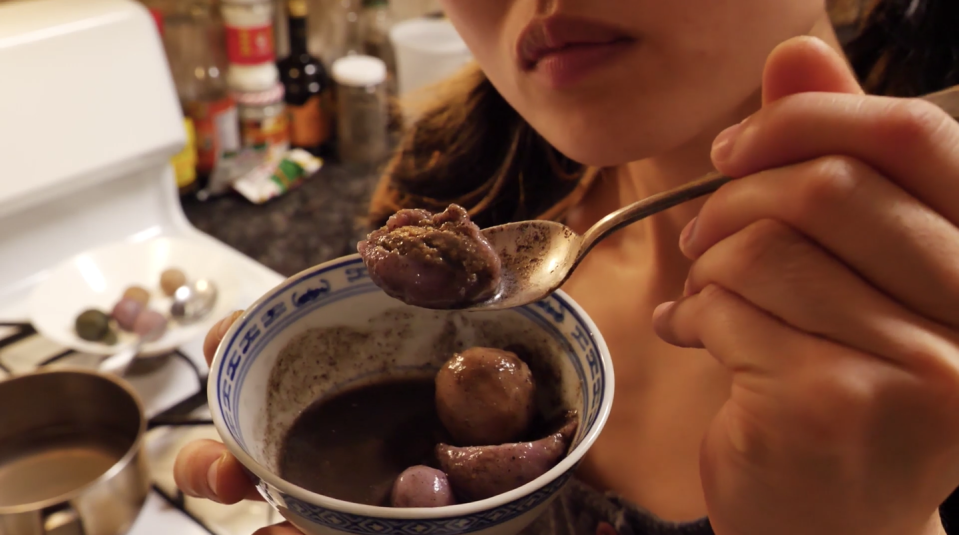
Traditionally shared with family on the 15th day of the Lunar New Year—a day known as the Lantern Festival—湯圓 is a (usually) sweet dumpling made of glutinous rice flour that symbolizes unity and celebrates togetherness. My favorite fillings are peanut butter and black sesame paste, but I made a special concoction this time around with what I had left on hand by day 5: toasted coconut, pepitas, leftover fried sesame bits from day 3, and some sugar. While Aaron really couldn't handle the flavor—he hates coconut unless it's in curry and completely untextured—I actually loved the nutty, sweet, granularity of this mix.
Tang yuan can usually be served straight in the water that it's cooked in, but I wanted to be a little extra for our new year and made one of my favorite sweet soups, 芝麻糊, or, black sesame soup. The dark tones of it made for an intriguing background for the rainbow dumplings—I'd made three different doughs, respectively colored with purple ube, green mugwort, and pink rose—and for contented sighs of enjoyment and fulfillment.
Sweet & Sour Fish
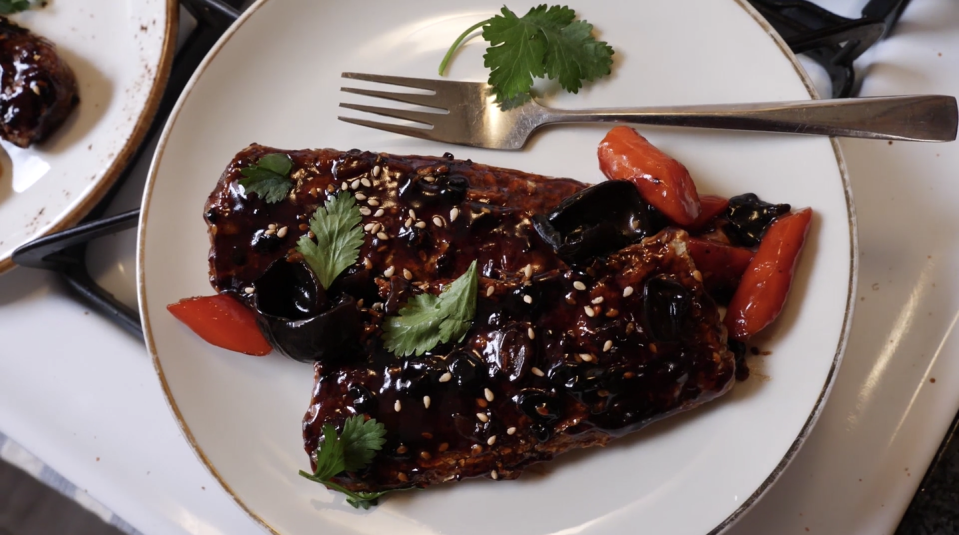
I found a package of fish in mom's freezer and remember she almost always used to pan-fry them, though the fishy flavors of not-so-fresh filets would shine through in an unpleasant way. Combined with my desire for a little more Chinese-American taste profile in day 3's menu, I figured frying them to a crisp then tossing in a sweet & sour glaze would be the right move, striking two birds with one stone.
And I was right—the flavors were fantastic. The fish itself, however, proved difficult to eat. This specific type of fish had very many bones that became impossible to extract cleanly once I'd sealed in the flesh with my cornstarch coating. But the sauce? The sauce is a keeper. I threw in some blanched wood ear and carrots and gave them a toss in the sauce and found them so addictively satisfying; I'd imagine you can toss anything you want in this mixture once you have a pot of it made.
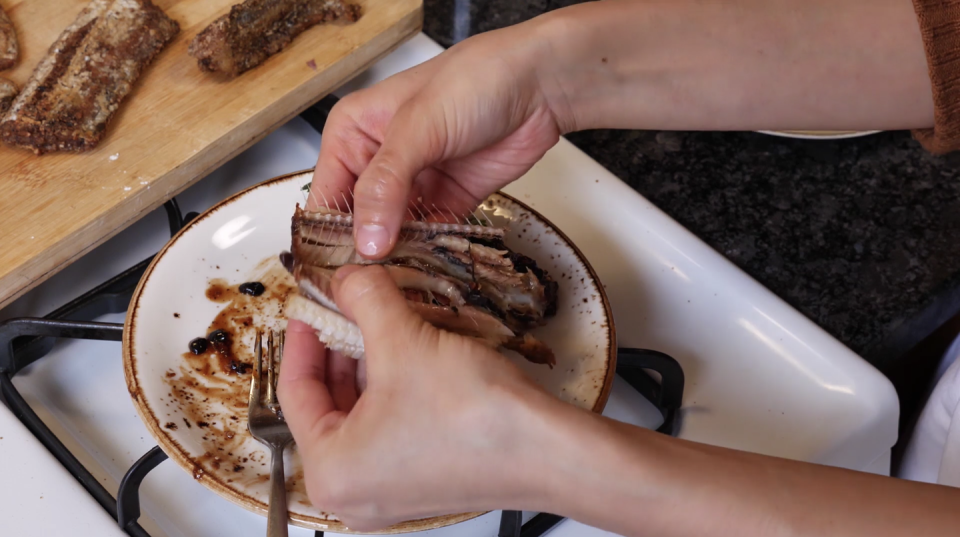
"Open Mouth Smiles"
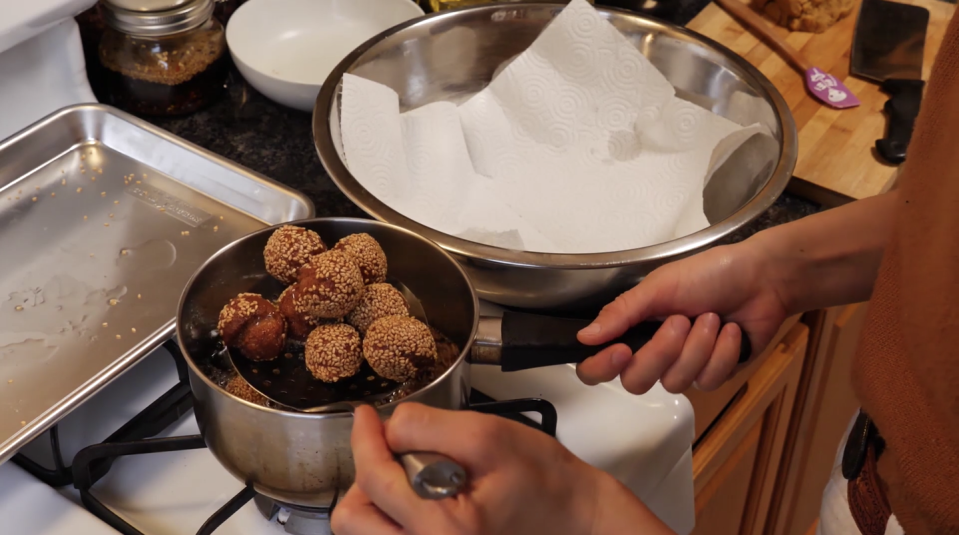
开口笑 was one of mom's favorite snacks. I'd bring her a box from a bakery from time to time when I used to visit her, and while she'd enjoy them, she'd always tell me to not buy them again, citing their unhealthiness.
I'm going into 2022 (and the rest of my life, I'd like to think) with relative disregard for fears of potential long-term consequences because life really is too short if you live perpetually in the future. I tried my hand at a homemade version of these "open mouth smiles"—which is, according to Wikipedia, "a popular dish during Lunar New Year for their resemblance to a smiling mouth"—and kind of failed miserably? After a couple of attempts of fixing the dough, I realized that my mistake was not in the dough itself, but rather in heating up my oil too hot, which led to a moist, cakey interior and a hard-fried nearly-burnt exterior, rather than the intended uniformly crunchy bite throughout, which requires a low cooking temperature over an extended amount of frying time.
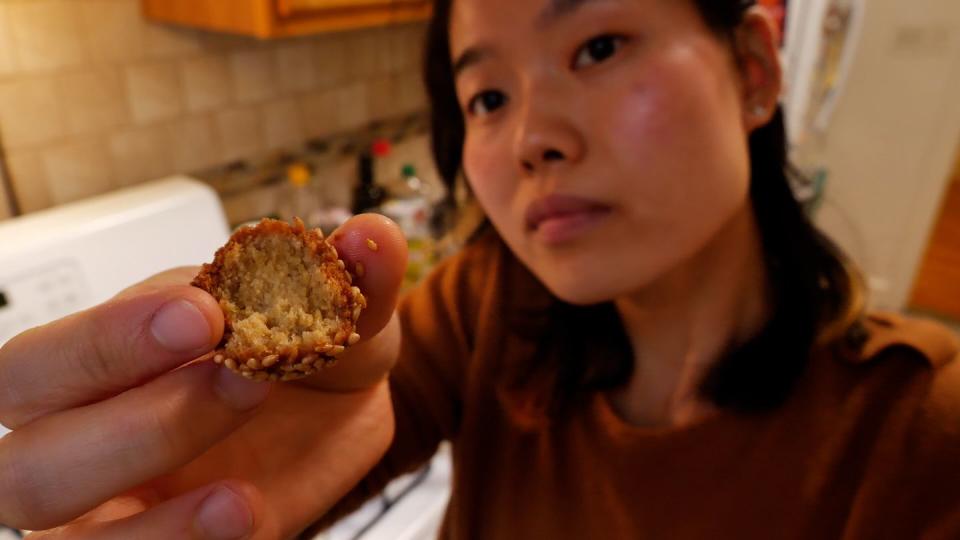
All in all, they were still a very enjoyable treat, like a donut-cookie hybrid—so very oily, so very bad for you, but bad is good from time to time, because life doesn't work in simple dichotomies like that.
Rolling Donkey
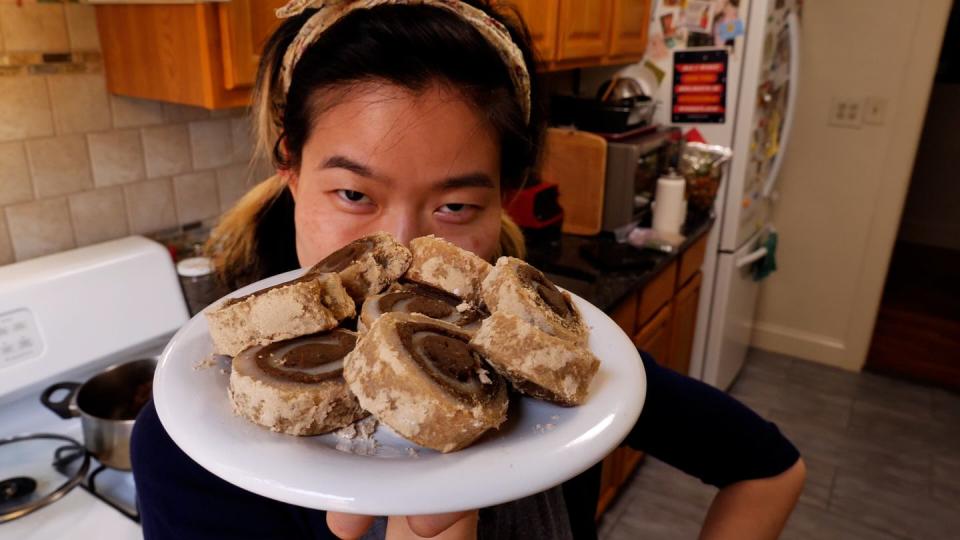
This is a childhood treat that I've only managed to eat once since leaving Beijing in 1997. I found a vendor in Flushing, Queens who sold it, and while it was deliciously soft and QQ, it just didn't have enough red bean filling in the middle to satisfy me. Because sticky rice cakes called 年糕 (nian gao) are usually eaten for an auspicious new year, I decided this was the perfect time for me to try my hand at making a version.
While I didn't have red beans, I did have mung beans ("green beans" in Chinese), and I made a brown sugar butterscotch mixture that I folded into the cooked beans to mimic the usually burgundy hues of red bean paste. While it didn't taste quite like what I remember from my childhood, I shared some with grandma, who seemed to enjoy it quite a bit, so who cares about authenticity if grandma likes it?
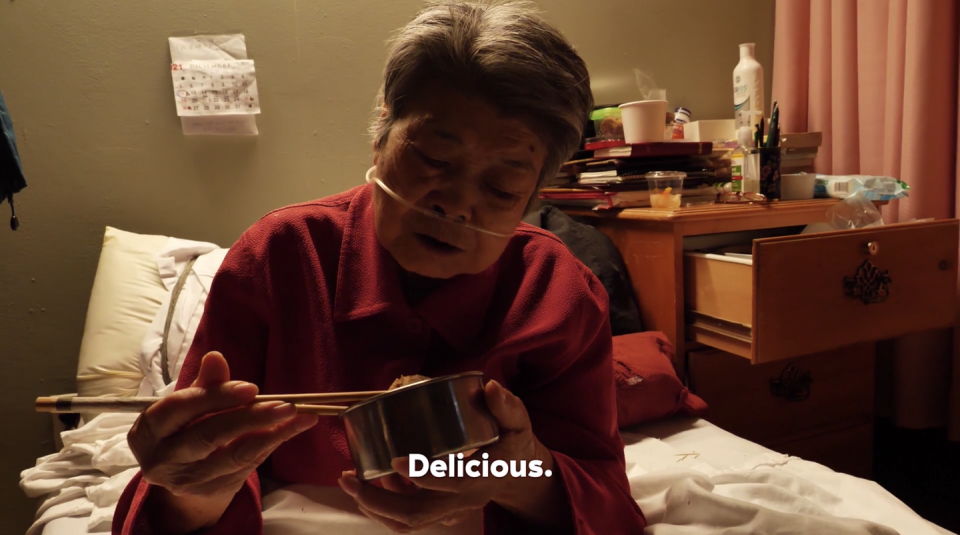
You Might Also Like

